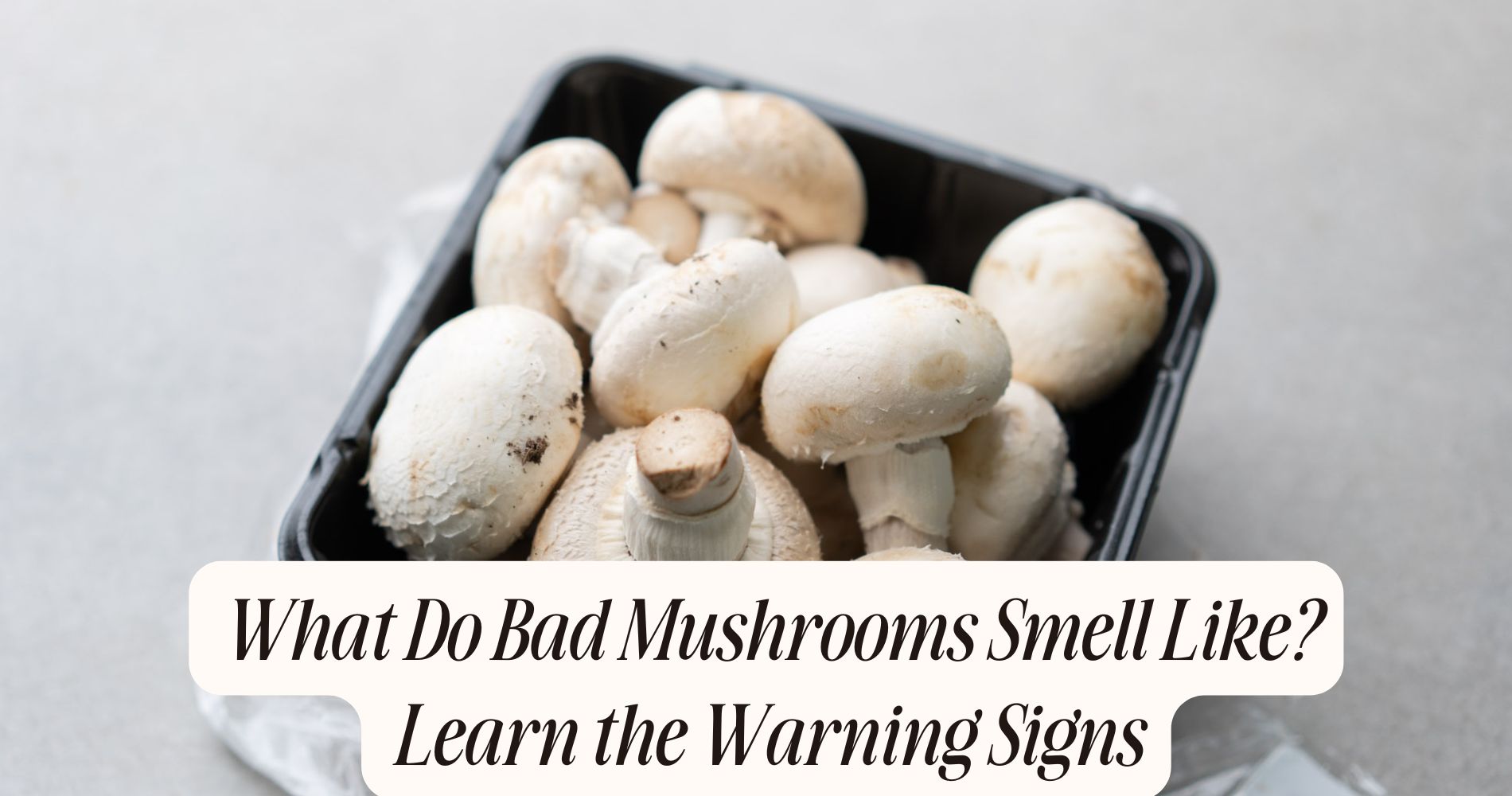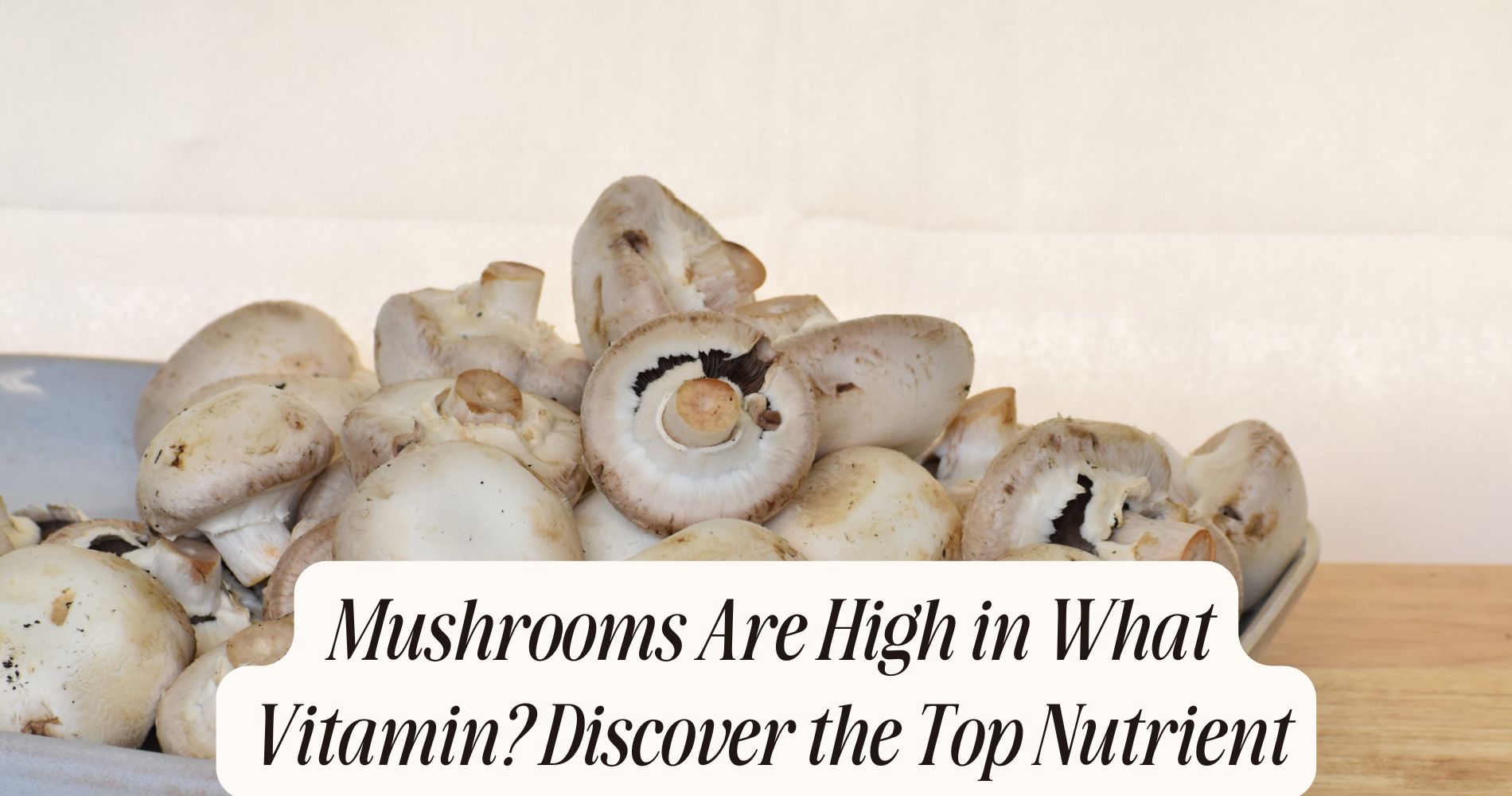
What Do Bad Mushrooms Smell Like? Learn the Warning Signs
What do bad mushrooms smell like? When checking mushrooms, always rely on your sense of smell—bad mushrooms give off distinct warning signs. You'll notice sharp, sour, or ammonia-like odors that indicate microbial spoilage, or a fishy scent from protein breakdown. Musty, moldy notes suggest fungal colonization, while a sudden rotting or putrid smell signals advanced decomposition. These volatile organic cues sharply contrast with the mild, earthy aroma of fresh fungi, helping you distinguish between safe and unsafe specimens. Learn how each scent reveals its own risk.
Why Smell Matters When Checking Mushrooms
Although mushrooms may appear visually unspoiled, their aroma often provides the earliest indication of spoilage. You should employ odor detection techniques to assess mushroom safety before considering other characteristics.
A fresh mushroom emits a subtle, earthy scent, but as spoilage progresses, volatile compounds produced by bacterial or fungal decomposition create sharp, sour, or ammonia-like odors. These olfactory cues are vital since certain poisonous mushroom features—such as toxins or harmful spores—may not alter outward appearance but can produce distinctive, unpleasant smells.

By training your olfactory senses, you’ll better detect these hazardous changes. Prioritize immediate examination of the aroma upon opening storage containers, as delayed assessment may allow dangerous compounds to accumulate.
Relying on your sense of smell can greatly reduce the risk of accidental ingestion.
The Typical Aroma of Fresh Mushrooms
When you encounter fresh mushrooms, you'll notice a mild, clean aroma characterized by subtle earthy notes and a faint hint of dampness reminiscent of rich soil. This olfactory profile indicates ideal freshness and is a reliable indicator for edibility concerns.
Fresh mushrooms shouldn't emit strong, pungent, or unusual odors; any deviation may signal decomposition or microbial contamination. Scientific observation reveals that volatile organic compounds, primarily 1-octen-3-ol, contribute to this characteristic scent, distinguishing good specimens from spoiled ones.
For storage tips, maintain mushrooms in a breathable container within refrigeration, minimizing excess moisture to preserve their natural odor and slow enzymatic degradation. Regularly check for changes in aroma, as a shift from the typical fresh profile can inform you about potential spoilage and associated health risks.
Sour Scents: What They Mean
Detecting a distinctly sour scent from mushrooms signals a significant biochemical shift and should raise immediate concern. When you notice this aroma, it often means lactic acid bacteria or other spoilage microorganisms have begun breaking down the mushroom tissue.
This metabolic activity typically coincides with increased moisture content, slimy texture, and visible signs of fungus growth. As cell membranes degrade, volatile organic acids are released—an unmistakable spoilage indicator.

You should recognize that mushrooms, in their fresh state, don't emit sour or tangy odors. If you encounter this scent, it’s a clear deviation from the expected umami or earthy aroma.
The presence of a sour smell correlates directly with compromised edibility and potential health risks, so you must discard mushrooms displaying these spoilage indicators immediately.
The Significance of a Fishy Odor
If you notice a fishy odor emanating from mushrooms, you’re observing a chemical signal that often indicates advanced decomposition. This scent typically arises from the production of trimethylamine and related volatile amines—compounds also associated with decaying seafood.
Such odors are a critical red flag in odor detection techniques, suggesting the breakdown of proteins and the proliferation of bacteria. While not all poisonous fungi emit a fishy smell, any mushroom displaying this characteristic should be treated as unsafe.
Your sense of smell acts as an early warning system, detecting volatile organic compounds before visible spoilage occurs. By identifying a fishy odor, you can prevent accidental ingestion of spoiled or potentially toxic mushrooms, reinforcing the importance of cautious evaluation during mushroom selection and storage.
Musty and Moldy Notes to Watch Out For
Beyond fishy odors, musty and moldy notes signal another stage of mushroom spoilage. When you detect earthy, damp, or basement-like scents, you're likely encountering byproducts of fungus fermentation and mold formation. These olfactory cues arise as environmental molds colonize the mushroom surface, breaking down organic matter and releasing volatile compounds.
You might notice a subtle, powdery smell, sometimes reminiscent of wet cardboard or rotting wood. Examine the gills and cap for visible mycelial growth—fine, fuzzy, or discolored patches indicate active mold formation. Such changes reflect advanced microbial activity and signal compromised edibility.
If you smell persistent mustiness or see any mold, discard the mushrooms immediately. Consuming them poses health risks due to potential mycotoxin presence and bacterial contamination.
Recognizing Ammonia and Chemical Smells
Although mushrooms typically emit earthy or neutral aromas, the presence of sharp ammonia or chemical-like smells signals significant spoilage. When you detect an acrid, pungent scent reminiscent of household cleaners or ammonia, it's a strong indicator that fungus fermentation has advanced beyond safe consumption.
This transformation results from microbial activity breaking down proteins and amino acids, releasing volatile nitrogen compounds. Chemical contamination, either from storage environments or pesticide residues, can also produce unnatural, synthetic odors.
Pay attention to any deviation from the expected olfactory profile—chemical notes often emerge suddenly and are distinctly unpleasant. If you notice these smells, discard the mushrooms immediately.

Relying on your sense of smell and recognizing these specific odors plays a pivotal role in preventing ingestion of hazardous or degraded fungi.
Rotten and Putrid Odors Explained
Detecting ammonia or chemical odors is only one aspect of evaluating mushroom freshness; equally important is identifying rotten and putrid smells that signal advanced decomposition. When mushrooms break down, bacterial and fungal activity leads to the production of volatile organic compounds such as hydrogen sulfide and butyric acid.
You’ll notice a pungent, foul stench, often reminiscent of decaying meat or rancid eggs—distinct from the earthy aroma of fresh mushrooms or even some poisonous varieties. This olfactory cue, coupled with a slimy or mushy texture, strongly indicates spoilage.
For maximum safety, always follow storage tips: refrigerate mushrooms in breathable containers to reduce moisture accumulation and microbial growth. Recognizing these putrid odors can help you avoid accidental ingestion and ensure you only consume safe, fresh mushrooms.
How to Safely Dispose of Bad Mushrooms
If you've identified mushrooms exhibiting spoilage—such as pronounced putrid odors, slimy surfaces, or visible mold—it's essential to dispose of them properly to minimize contamination risks. Place the compromised fungi in a sealed plastic bag to contain spores and prevent pest infestation.
Avoid disposing of bad mushrooms in compost, as pathogens and mycotoxins can persist and spread.
Wash your hands thoroughly after handling spoiled mushrooms to prevent cross-contamination.
Assess your storage methods; improper storage, such as excessive moisture or lack of ventilation, often accelerates decay and increases microbial proliferation.
Clean any surfaces or containers that contacted the bad mushrooms with a food-safe disinfectant.
From Spoiled to Supercharged: Meet Your Daily Mushroom Boost
While it's important to steer clear of bad mushrooms, there's a simple way to safely enjoy their full benefits—meet SUPER MUSHROOM GUMMIES by Well Gummies. This convenient gum-chew formula packs the power of 10 functional mushrooms into every bite, delivering clean energy, mental clarity, and immune support without the hassle of prep or spoilage. With a fresh wild berry flavor that tastes like candy, these vegan gummies provide a jitter-free boost to help you shine all day—no bad smells, no crash, just wellness in its most delicious form.
Frequently Asked Questions
Can Cooking Bad Mushrooms Remove Harmful Toxins or Smells?
You shouldn't depend on cooking as an odor removal method or to guarantee mushroom freshness. Heat can't eliminate all harmful toxins produced by spoiled mushrooms. Volatile compounds may dissipate, but dangerous mycotoxins often remain, posing significant health risks.
Are Certain Mushroom Varieties More Prone to Developing Bad Odors?
You’ll notice certain mushroom varieties, especially those with high moisture content, exhibit spoilage indicators more rapidly. Toxic varieties may emit distinct, unpleasant odors due to microbial activity, enzymatic breakdown, and volatile compound release, signaling advanced decomposition and potential toxicity.
What Other Signs, Besides Smell, Indicate Mushrooms Have Gone Bad?
You should assess mushroom texture for sliminess or excessive softness, as these indicate cellular breakdown. Observe color changes, such as darkening or spotting, which suggest enzymatic browning or microbial colonization. Discard mushrooms exhibiting these morphological deterioration signs.
How Should Mushrooms Be Stored to Prevent Spoilage?
To maximize mushroom preservation and spoilage prevention, you should store mushrooms unwashed in a paper bag, maintain refrigeration at 1-4°C, and guarantee moderate humidity. This inhibits microbial proliferation, enzymatic browning, and moisture accumulation, extending postharvest viability considerably.
Is It Safe to Eat Mushrooms With Slight Discoloration but No Odor?
When evaluating mushroom freshness, you shouldn’t rely solely on odor. Slight discoloration may indicate enzymatic browning, but check for sliminess, texture changes, or mold. For edible criteria, consume only if appearance, texture, and smell remain ideal.
Conclusion
When inspecting mushrooms, depend on your olfactory senses for early spoilage detection. If you detect sour, fishy, musty, moldy, ammonia-like, or putrid aromas, these volatile organic compounds indicate microbial proliferation and enzymatic decomposition. Such deviations from the characteristic earthy, umami scent signal compromised cellular integrity and potential toxin formation. Don’t risk ingestion—dispose of suspect specimens promptly in a sealed bag to prevent cross-contamination and ensure food safety in your kitchen environment.




